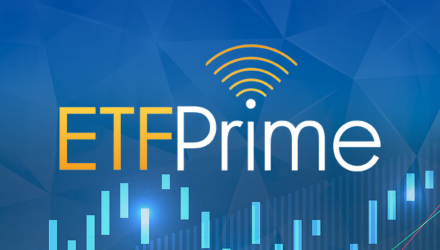On this week’s episode of ETF Prime, host Nate Geraci is joined by Tom Lydon, CEO of ETF Trends, to discuss the best and worst performing ETFs of 2021, as well as which exposures you should absolutely consider for your portfolio in 2022. Later, Geraci is also joined by CEO and CIO of Tuttle Capital Management, Matt Tuttle, to discuss the Short Innovation ETF (SARK), an ETF that is designed to offer daily inverse exposure to the ARK Innovation ETF (ARKK).
Lydon opens by discussing what a record-breaking year it’s been for the ETF industry, with over $900 billion in new assets this year. The U.S. ETF industry now represents $7 trillion in assets, while the global ETF market sits at $10 trillion.
He explains that most of those funds went into the core parts of the market, such as the three largest S&P 500 ETFs: the SPDR S&P 500 ETF Trust (SPY), the iShares Core S&P 500 ETF (IVV), and the Vanguard S&P 500 ETF (VOO). These three funds alone collectively brought in more than $100 billion.
“It’s always fun to talk about, as Eric Balchunas says, the ‘most shiny objects,’ but the industry continues to grow at the core and rightly so. It should,” Lydon says.
Geraci explains that when considering the top performers within ETFs for the year, they tend to be the more niche funds. The top five ETFs for 2021, excluding inverse, leveraged, and volatility funds, are as follows:
- The Breakwave Dry Bulk Shipping ETF (BDRY), which is up an incredible 240% this year.
- The iPath Series B Carbon ETN (GRN), which is up 135% YTD.
- The iPath Series B Bloomberg Tin Subindex Total Return ETN (JJT), which is up almost 120% YTD.
- The First Trust Natural Gas ETF (FCG), which is up nearly 100% YTD.
- The KraneShares Global Carbon ETF (KRBN), which is up almost 100% this year and has brought in more than $1 billion in assets.
Rounding out the top ten were also three energy ETFs, a uranium ETF, and a rare metals ETF. Lydon believes that the concentrations in commodities, carbon, and energy are all good indicators of where investors should be looking towards as we enter into a new year, particularly with inflation and the cost of goods continuing to grow.
Meanwhile, the worst performing ETFs of 2021 included:
- KraneShares CSI China Internet ETF (KWEB), which is down 50%, but one of the stories of the year was the fund’s record inflows of $8 billion, as investors bought the dip.
- Global X Education ETF (EDUT), which is down roughly 50% YTD.
- Invesco Golden Dragon China ETF (PGJ), which is down 44% this year.
- Global X Emerging Markets Internet and E-Commerce ETF (EWEB), which is down 39% YTD.
- ProShares Long Online/Short Stores ETF (CLIX), which is down 38% YTD.
“The big question, are [these ETFs] down and out in 2022? I wouldn’t bet against online buying, I wouldn’t bet against China, and I surely wouldn’t bet against Cathie Wood,” Lydon says of the underperformers.
Switching to discuss building a portfolio for 2022, Lydon says that he is seeing a shift from a 60/40 portfolio to a 70/30 one as advisors grow increasingly concerned about bond performance. Inflation-related ETFs within things such as commodities and even gold, despite being underperformers this year, could be a hedge for investors next year.
Lydon also believes that if investors are looking to invest long-term, there are some enticingly priced ETFs out there in China and disruptive tech. He also thinks that crypto exposure is going to continue to grow as more advisors and investors gain small exposures to various parts of the crypto space.
The show closes with Matt Tuttle discussing the Short Innovation ETF (SARK) and the decision to launch a fund that goes short on ARK’s flagship ETF. The primary reasons for launching this product now are the changing economic and market environment of rising inflation and interest rates, and the hope that it will be a good hedge for portfolios.
“If this product had been around at the beginning of the year and you had used it to hedge your portfolio, it would be a home run. It’s something that to us is just a way more effective hedge than buying SQQQ, the 3 X Nasdaq Short, which I know a lot of people like to use,” Tuttle explains.
For more news, information, and strategy, visit ETF Trends.
Listen to the Entire ETF Prime Episode Featuring Tom Lydon:
For more ETF Prime podcast episodes, visit our ETF Prime channel.

